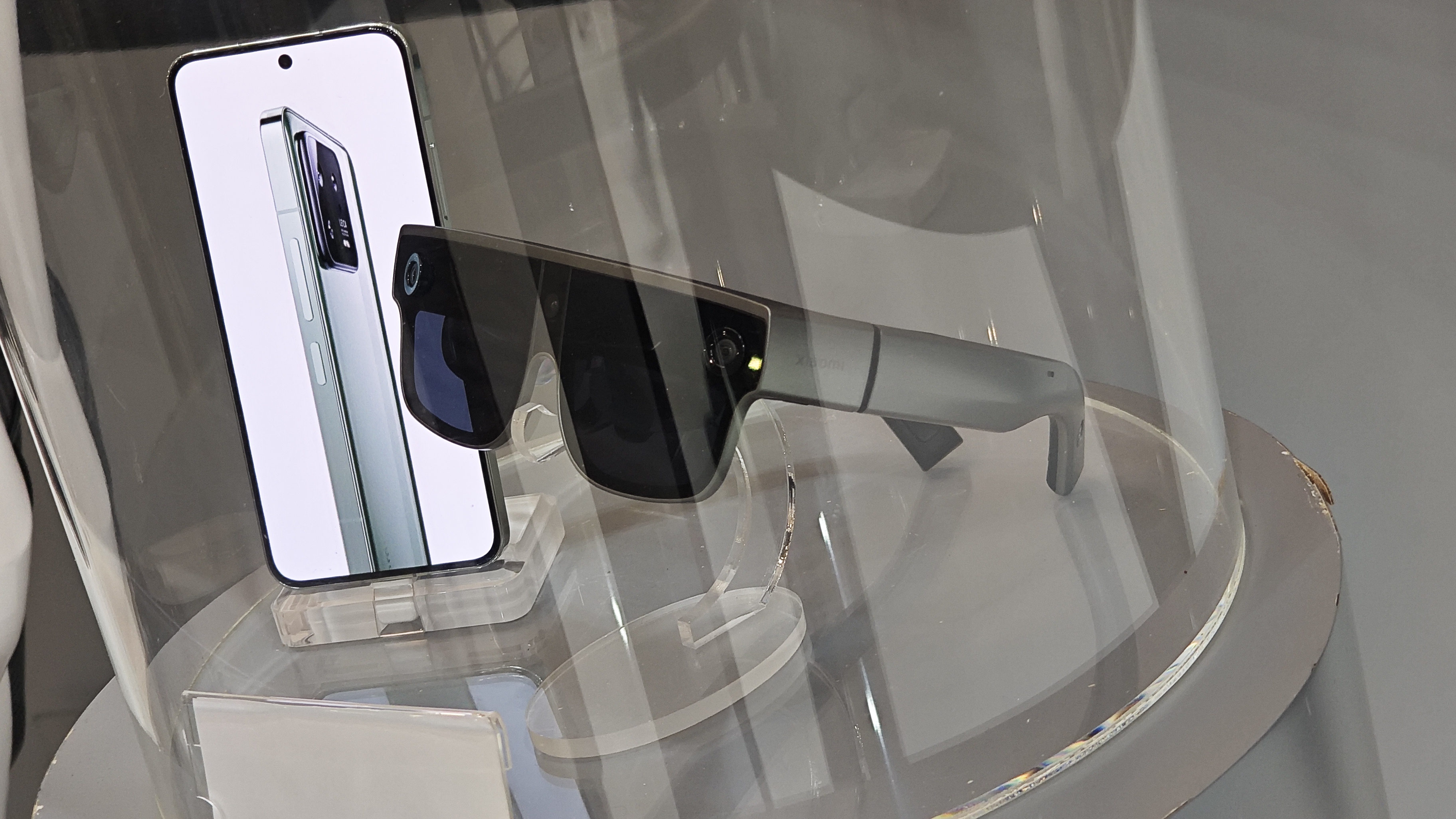
When it comes to the best VR headsets, most options are bulky, space age looking devices that leave users looking like a Daft Punk cover act. That's not a design ethos Xiaomi have taken with their latest concept product, though.
Unveiled at MWC 2023, the Xiaomi Wireless AR Glass Discovery Edition brings a strong feature set to an AR solution. For starters, the unit is much smaller, looking more like a pair of sunglasses. That makes it much easier to wear and use in every day scenarios – you might even get away with them as sunglasses without anyone noticing!
Despite the more manageable form factor, these glasses are packed with fantastic features. For starters, they're totally wireless, with latency that is comparable to wired units at less than 50ms. That's partly thanks to the processor – the unit uses a Snapdragon XR2 Gen 1 chipset.
The device has been designed with the centre of gravity over the nose piece, for a perfectly balanced feel when in use. It's super light too – just 126g – thanks to a stack of lightweight materials. Carbon fibre and a magnesium-lithium alloy make up the bulk of the material bill, shaving off valuable grams across the board.
The lenses in these glasses are simply top notch. They feature electrochromic colour changing capabilities, to let the user to choose between clear and shaded. That allows you to use the headset for both VR and AR applications. And when it comes to using it, you'll be met with one of the best displays on any headset. Measured in pixels per degree (ppd), Xiaomi says "the human eye stops being able to distinguish granularity" at 60ppd – this display is 58ppd, so almost perfect in that regard.
What's more, the glasses use micro-gesture interactions to enable button presses and even typing with your hands as the controls. It uses the knuckles on your hand for reference, with the second knuckle on your middle finger at the centre of a D-pad style controller. Plus, all 12 knuckles can be used like an old-school dial pad, for inputting text.
I'm a massive fan of this technology. Watching it in use as a gaming platform was cool, but there is a far greater range of applications for this kind of technology. Promotional material shared at the unveiling showed a user placing a virtual monitor on the wall and using the glasses to watch TV. For me, that use case has real potential. Users could employ a virtual setup for working or gaming – potentially without even needing a keyboard! It could be really handy for travelling workers who need to be able to get going quickly, from anywhere.
Get all the latest news, reviews, deals and buying guides on gorgeous tech, home and active products from the T3 experts
With this still being a concept, there's no guarantee of when – or even if – this product will be commercially available. But I can say for certain, that if it does, I'll be first in line to get one.

Sam is an award-winning journalist with over six years of experience across print and digital media. As T3’s Senior Staff Writer, Sam covers everything from new phones and EVs to luxury watches and fragrances. Working across a range of different social media platforms alongside his written work, Sam is a familiar face for fans of T3. When he’s not reviewing snazzy products or hunting for stellar deals, Sam enjoys football, analog photography and writing music.
